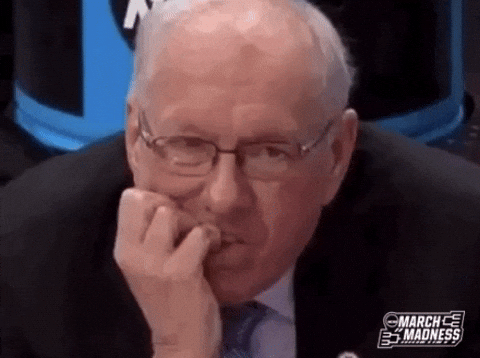- NIL Wire
- Posts
- 🏅International Student-Athletes are an NIL Cheat Code
🏅International Student-Athletes are an NIL Cheat Code
A FREE ALL-ACCESS EDITION on how visa restrictions will “offshore” college talent
Hey there,
Today we’ve got a completely free edition of NIL Wire All-Access for you, where we talk about how, because of NIL restrictions, international student-athletes are poised to become much more valuable than stateside athletes. It’s a must-read story, and guess what? You can, even if you’re not an All-Access subscriber.
Heck, if you like what you read here, maybe consider joining the All-Access team to get stories like this delivered directly to your inbox twice a week – we don’t think you’ll regret it. But don’t take my word for it, you can read this story and decide toward the end.
— Cole, Justin and Collin
Let’s Get Started…
A few weeks ago, we told you about how MAGA policies are affecting college sports – specifically, a bill in Texas that’s trying to curb international student-athletes from playing sports at public schools in the state. In those pieces we broke down how college sports have unwittingly mirrored the philosophical tug-of-war within the Republican party itself. We also discussed who stands to gain the most (private schools) and the least (public schools) because of those policies.
Today, we’re talking about international athletes themselves – specifically, how certain laws surrounding student visas actually make these athletes more valuable than homegrown talent. It all comes down to the rapidly evolving rules surrounding NIL rights, rev-share, and much more. Let’s get into it.
HOLD UP. This is the part you usually exit out of the email if you’re not an All-Access subscriber. However, we’ve got awesome news: This story is coming to you free of charge. If you’re on the fence about upgrading to All-Access, consider this our attempt at convincing you.

If you like what you read here, then you’ll love our All-Access subscription, where we’re delivering analysis like this twice a week. There’s a link at the end of the piece where you can join the All-Access team if you feel so inclined.
NIL Rights and Rev Share
Okay, so I’ve made a pretty big claim: International athletes are more valuable than homegrown talent. Not the same amount of value, but more important to a school’s success. Let’s break down this (admittedly bold) claim.
First things first: we’ve got to understand the policy surrounding NIL and international student-athlete visas.
If you didn’t know already, international student-athletes are actually not allowed to fully utilize their NIL rights. In fact, they risk losing their F-1 (student) visa if they do – they’d have to leave the U.S. entirely if they made money from their NIL.
International student-athletes should be able to freely monetize their #NIL in the US.
Instead, as OU football’s @official_Grind4 shows, they have to travel to their home countries for deals.
— Tariq Ahmad (@tariq_ahmad)
3:23 PM • Jan 8, 2025
Now, it’s not all that cut and dry, and these athletes aren’t completely barred from earning money. Instead, they’re only barred from making NIL money in “active” ways. What’s active? Well, signing an autograph is “active.” Posting promotional videos on their Instagram is “active.” Anything that requires the athletes to, well, do something, is an “active” form of NIL earning.
The rest – like licensing out their NIL for the college football video game – is “passive.”
Okay, so active vs passive seems straightforward enough. But what about actually for the team? Does that qualify as active, or passive income?
The answer to that question isn’t clear. Technically, these players aren’t getting paid to play sports at schools at all. However, if you look at any of these NIL agreements, you’ll see that they contain features that would point toward pay-for-play, not whatever excuse they’re given:
Great look at the school contracts being presented to athletes in anticipation of House settlement approval.
College athletes already meet the legal test for employment.
These contracts reinforce that.
Athletes need representation to negotiate these.
espn.com/college-sports…
— Mit Winter (@WinterSportsLaw)
2:36 PM • Mar 5, 2025
(We’re not necessarily endorsing Winter’s commentary here, just wanted to give you a look at what these contracts look like).
Okay, so these contracts may actually constitute pay-for-play then? Yeah, potentially. This is the exact reason the NIL clearinghouse is being proposed – to make sure that NIL deals are actually NIL deals that are consummate with market value. Right now, these deals are functionally just salaries, which undermines the House settlement’s whole plan for a “salary cap” of sorts.
That’s a perfect transition to the next point: It’s not just NIL – international student athletes also can’t get paid rev-share money from the proposed “salary cap.” No NIL, no rev-share… essentially, international students can’t really make money playing college sports. The money they can make – through passive licensing – isn’t really in the school’s hands anyways.
This is another example where refusing to admit why college athletes are paid by schools creates legal issues.
As @kmimmigration notes, athletes are really being paid for athletic labor.
Denying that creates visa issues for international athletes & potentially schools as well.
— Mit Winter (@WinterSportsLaw)
2:12 PM • Feb 22, 2025
International Student-Athletes Woes
Okay, sure. But what’s that got to do with international student-athletes (I really need to find an acronym for that, don’t I?) being more valuable than homegrown athletes?
Well, we’ve established that international student-athletes have functionally no way of getting paid. Meanwhile, most of their homegrown teammates’ student-athletes are being given contracts that look a lot like pay-for-play contracts – well, at least for revenue generating sports.
Hold up… so some players are getting paid to play ball… while an entire other class is getting paid nothing to play ball? International athletes are essentially performing free labor for the schools that they play for!

Whereas a player of a similar skill level would be getting paid hundreds of thousands in NIL and rev-share payments to play for the school (which, to be clear, is exactly what they’re doing), international students aren’t allowed to monetize themselves as such. With this being the case, why would a school even try to find homegrown talent? They could import that very same talent from abroad for a fraction of, if not zero, cost.
If you’ll allow me my soapbox for a moment: it’s unfortunate that, because international student athletes are not able to be paid, their labor now becomes more important in the economics of college sports. They’re a market discrepancy.
It’s not just international athletes that are getting screwed here though. In fact, this whole system will actually end up hurting homegrown talent too.
Because schools can “offshore” their rosters by filling them with cheap international players, they’ll actually stop recruiting as many players as possible in the U.S. I wouldn’t be shocked if some schools completely commit to the idea with sports like tennis which, on the whole, have better international players than stateside ones.

Universities haven’t seemed to catch onto this quite yet, but I’m sure it’s coming – the free market always finds a way. In the same way that corporations have offshored manufacturing to developing nations to save money, athletic departments will soon be doing the same thing with international student-athletes. Probably with every sport other than football, so that they can spend the majority of their rev-share cap on football.
Basketball
Let’s take basketball as a case study. In recent years, we’ve seen a trend of international basketball players coming to the U.S. to showcase their talent and hopefully catch the eyes of NBA scouts. Guys like Egor Demin at BYU or Illinois’ Kasparas Jakucionis are getting paid basically nothing to actually play, but they see the tradeoff as worth it because of the NBA scouting exposure.
He's from Lithuania, and he's played with some of the best European players.
Kasparas Jakucionis is not your typical freshman.
@BTNJourney profiles the @IlliniMBB star's path to Champaign 👇
— Big Ten Men's Basketball (@B1GMBBall)
3:27 AM • Mar 6, 2025
Now imagine if a big-time program figured out what I’m saying, or a coach with a reputation for sending guys to the league. Like, if John Calipari said to both Egor Demin and Kasparas Jakucionis that he could get them to the league, they’d probably go to that school – it’s all about exposure for them, and Calipari gets more exposure than either BYU or Illinois.
Using this logic, Calipari, or anyone really, could assemble an Avengers-level squad of amazing international players at basically no cost. They’d just have to convince them that they’ll get in front of NBA scouts.
Okay, so say Calipari is successful at this. Now, he’s freed up finances to chase a really big fish like AJ Dybantsa, who’s going to get at least $7 million in NIL next year. Or maybe that money can just feed directly into football programs, which is what the schools want anyways. I’m not sure where the excess money would go, I’m just positive that it would exist.
The “Offshoring” Cheat Code
Now maybe you can see why I call this whole thing a “cheat code.” If the NBA disallowed international players from getting paid as much as U.S. players, teams would be recruiting much more heavily in the international markets. That’s exactly what I think is about to happen with college sports if they can’t fix this NIL-visa loophole with international athletes.

It’s not cheating… but it is a cheat code.
There have been efforts to fix the problem at the federal level over the last few years, but nothing’s come of them. And now with bills being proposed like the one’s we’ve been talking about in Texas, I really doubt we’re getting a consensus on the issue anytime soon.
The Texas Bill
Let’s talk briefly about that Texas bill one more time in light of this college sports “offshoring” problem. If either of those bills pass (we talked about them at length here) and become law, public schools in the state will be at a severe disadvantage (which we also talked about in another All-Access piece).

But it’s more than just a talent recruiting disadvantage – these policies would actually be limiting the public schools’ ability to benefit from this loophole as well. Stocking an entire basketball team with elite overseas prospects for little-to-no cost would be impossible at the University of Texas because of these bills… but it wouldn’t be impossible at a place like Baylor.
Or, I don’t know, Texas’ most bitter rival, Oklahoma. Just something to think about.
Once again, I’m not trying to debate the social or political merits of these bills. All I can do is evaluate how they would change the college sports landscape as a whole, and they would – probably to a greater degree than people currently realize.
So What?
I feel somewhat bad even writing this. Here I am telling you that smart schools will notice how they can exploit this NIL rule with international student-athletes, and they’ll almost certainly benefit as a result. Returning to the analogy I made earlier between a corporation offshoring their manufacturing to a cheaper place like China… it’s morally ambiguous at best.

But I’m not here to play philosopher. I’m here to analyze what’s going on in college sports. What do you think? Should schools go all-in on offshoring their talent? What are the ethical ramifications of doing so? As always, let us know by replying to this story.
Oh, are you not usually an All-Access subscriber? Well this sort of analysis is coming every single week if you level up your subscription. Become the smartest college sports fan in the room today by joining the team! We’ll see you next time.